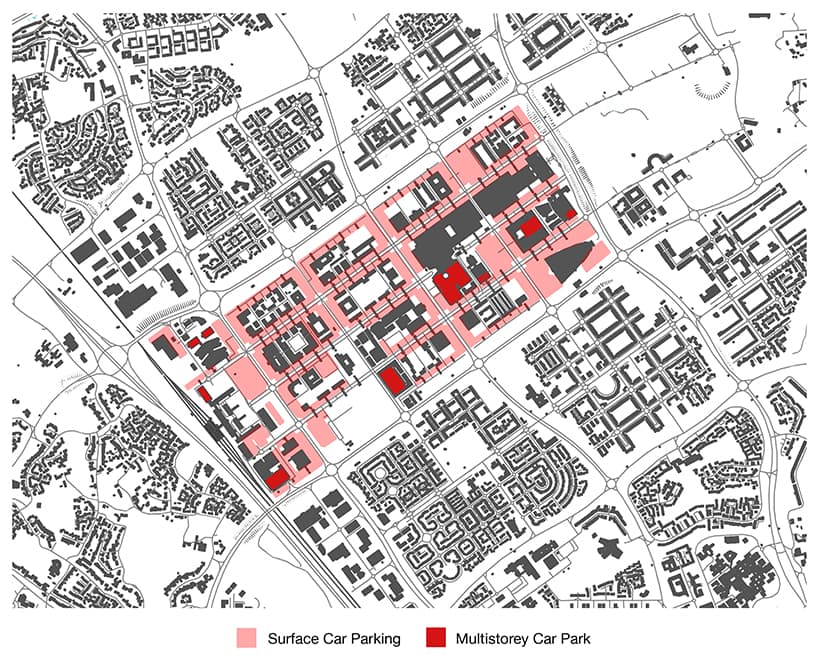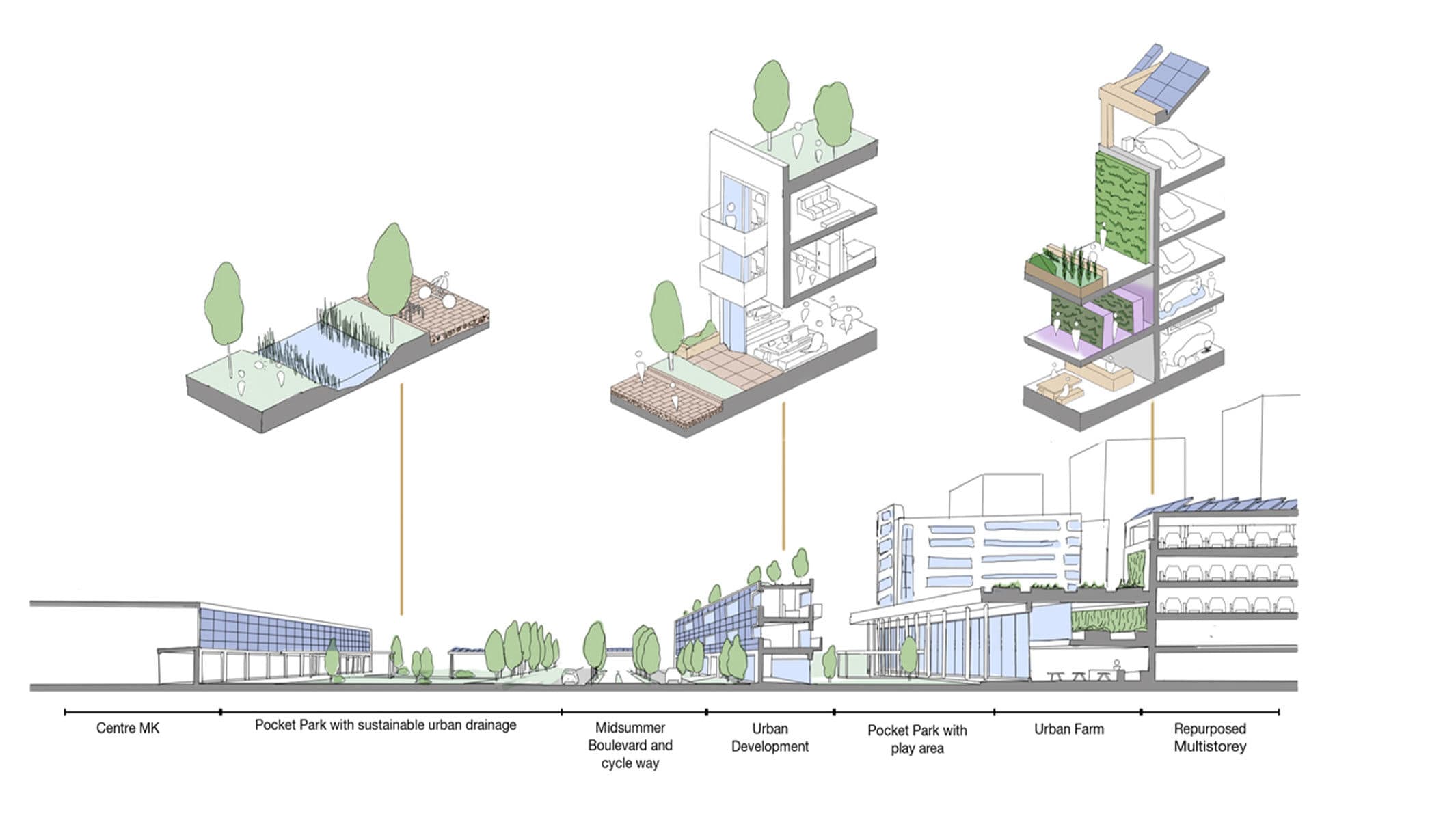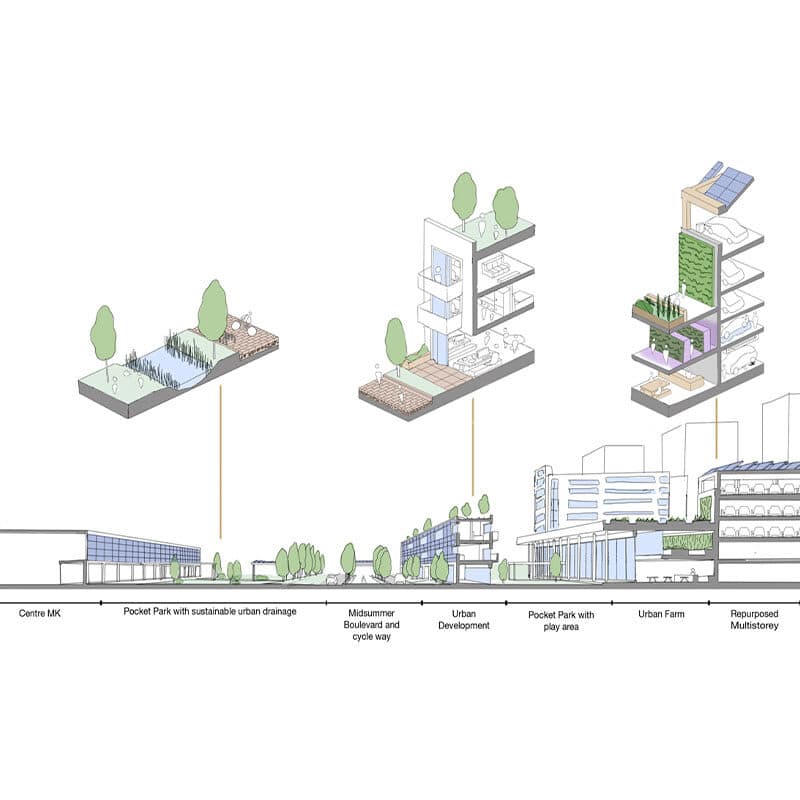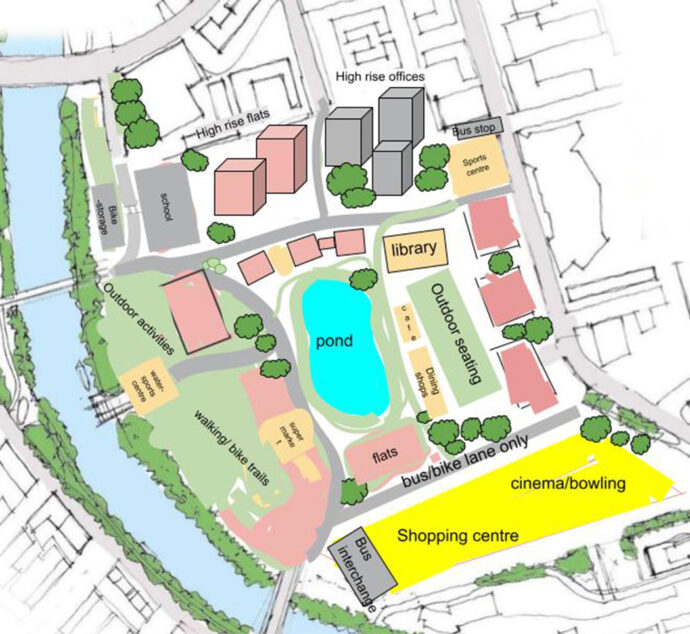Ending Automobile Addiction
Imagine turning up to work, grabbing a coffee from the kitchen, sitting down at your desk, doing 22 minutes of work and then just stopping. You don’t leave your office, you just sit. For 7 hours and 8 minutes you just sit at your desk and stare blankly at your monitor, and then you pack your bags and leave. In a work day consisting of 7.5 hours, your 22 minutes of work constitutes a mere 5% productivity. We don’t accept this from our employees, so why do we accept this from our cars?
Cars in the UK spend roughly 95% of their life stood completely still. The issue here isn’t necessarily about wasted time however. If you’re following your dentist’s advice, you’ll be spending 4 minutes a day brushing your teeth, making your toothbrush significantly more lazy than your car, the crucial difference here is the amount of space taken up by the car. A standard car parking space takes up 12.5sqm – 4 parking bays, at 50sqm, take up the same amount of space as a standard new-build 1-bed dwelling.
The automobile is an integral and ubiquitous part of the built environment. Our towns and cities are built upon frameworks defined by the desire-lines of traffic and the expert analysis of highways engineers. But it’s not just the roads, it’s the miles and miles of tarmac that cover the earth, waiting to be parked upon. Take any supermarket in the UK – around 2/3 of any suburban supermarket footprint is taken up by car parking. So what happens when the automobile becomes redundant?
We are already seeing clients approach us to reduce parking provision on their ailing retail sites. City centre car park operators are reporting consistent under-utilisation of their car parks. The trend is clear: the private car is on the way out. Patchwork infill development is already underway in various cities and towns but how will this trend affect a town conceived almost entirely around the car?
Milton Keynes – Motor City
There is perhaps no better example of a car-centric British city than Milton Keynes. On-street parking accounts for a whopping 24% of the surface area of the city centre. There are 4,005 parking spaces in multi-storey car parks – accounting for over 100,000sqm of area. That’s the equivalent of more than 1,000 three-bed homes.

In the dawn of the driverless vehicle, on-street parking will become virtually redundant. When the car can drive itself, it doesn’t need to wait around for its owner. In a democratised, on-demand car-sharing system the car can drop the passenger off at their destination and then set off straight away, picking up the next passenger, then the next, and so forth. These cars of the future stop only to charge, and once solar charging improves sufficiently, they won’t need to stop at all.
This future is closer than you might think. Milton Keynes is in fact already home to a large-scale driverless car trial. Currently the cars are controlled by remote operators, dispatched on-demand to passengers through an app, though they are trialling the fully autonomous version also. When this system or one of its successors becomes fully embedded into everyday use, on-street parking will become a thing of the past in Milton Keynes.
With close to a quarter of the city’s surface area now up for grabs, development opportunities are abundant; new housing, pocket parks, co-working spaces, sustainable urban drainage systems, renewable energy capture, community agricultural projects, the list goes on.
Given the scope of opportunity and the regularity of the city’s spatial arrangement, it is essential to develop a methodology for infill development that is sustainable and of a consistent character.
Reclaiming the Roads
Our case study in Milton Keynes explores how motor-vehicle infrastructure may be repurposed as the car falls out of use, as a result this case study is based on an imagined but not far-fetched future scenario for the city.
As private cars fall out of use and are gradually replaced by on-demand electric driverless vehicles, appropriate infrastructure will be required to store these vehicles and maintain them. We have identified a number of existing multi-storey car parks across the city which could be used for this purpose – capacity could even be doubled as you wouldn’t need circulation space in a one-in-one-out formation. We have then shown isochrones around these car parks – demonstrating that these driverless vehicles will never be more than ten minutes from any part of the city centre. This marketing principle of not having to wait more than 10 minutes is quite powerful and has been adopted successfully by the grocery delivery app Gorillas.
As designers, our response to this paradigm shift in movement and the development opportunities it will afford must be well-considered, but not just for the sake of good architecture but for the sake of the planet. The damage we have caused to the planet with relentless fossil fuel consumption and extractive, destructive construction practices is considerable but not irreversible. As we finally begin to decarbonise our methods of transport we must decarbonise our built environment in parallel. The built environment contributes more than 40% to the world’s total carbon emissions, more than all forms of transport combined. It should be abundantly clear that ditching our cars isn’t enough, we have a responsibility to turn our towns and cities into clean green living machines! We can’t afford to miss this opportunity – the fate of the planet depends on it.













